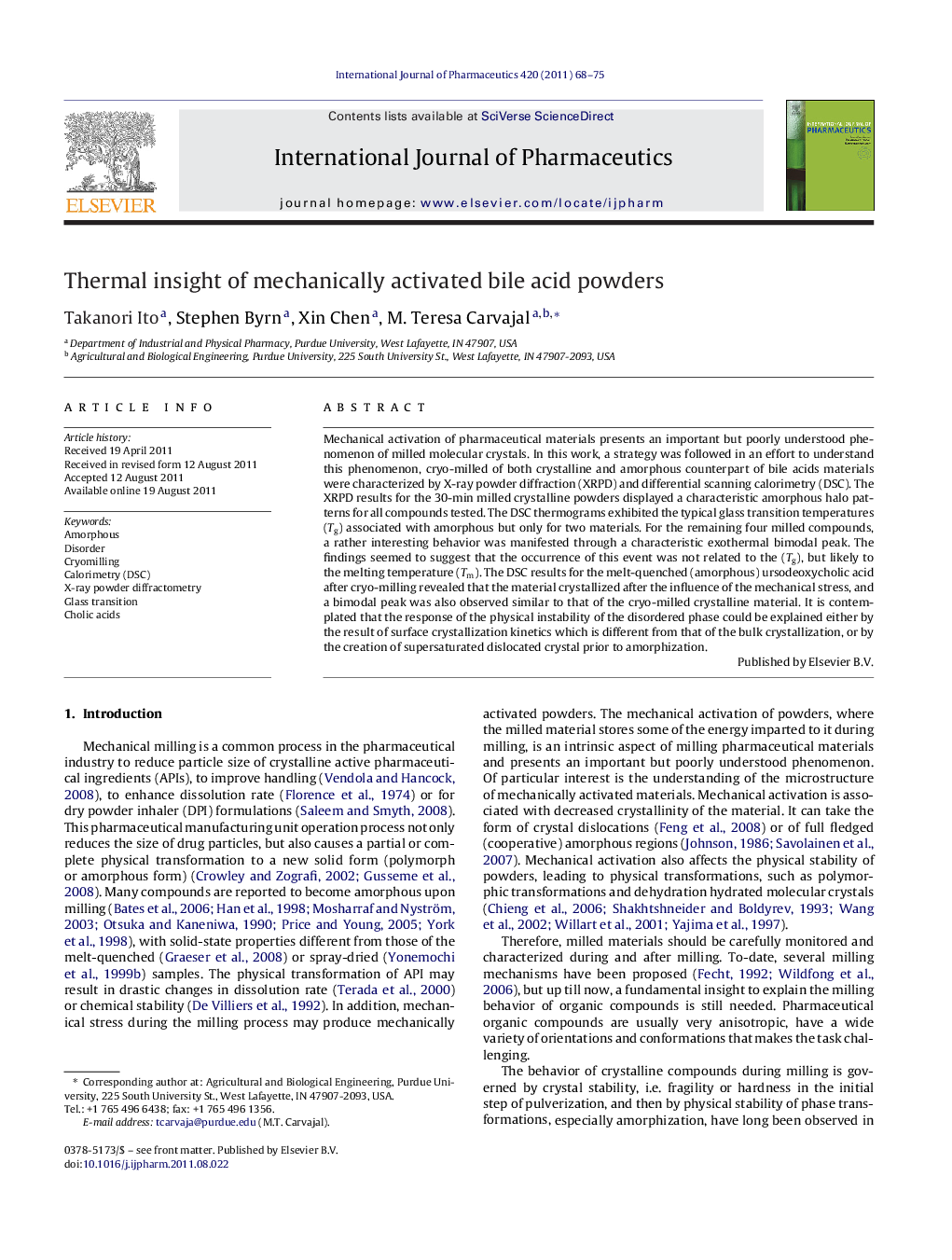| Article ID | Journal | Published Year | Pages | File Type |
|---|---|---|---|---|
| 2503153 | International Journal of Pharmaceutics | 2011 | 8 Pages |
Mechanical activation of pharmaceutical materials presents an important but poorly understood phenomenon of milled molecular crystals. In this work, a strategy was followed in an effort to understand this phenomenon, cryo-milled of both crystalline and amorphous counterpart of bile acids materials were characterized by X-ray powder diffraction (XRPD) and differential scanning calorimetry (DSC). The XRPD results for the 30-min milled crystalline powders displayed a characteristic amorphous halo patterns for all compounds tested. The DSC thermograms exhibited the typical glass transition temperatures (Tg) associated with amorphous but only for two materials. For the remaining four milled compounds, a rather interesting behavior was manifested through a characteristic exothermal bimodal peak. The findings seemed to suggest that the occurrence of this event was not related to the (Tg), but likely to the melting temperature (Tm). The DSC results for the melt-quenched (amorphous) ursodeoxycholic acid after cryo-milling revealed that the material crystallized after the influence of the mechanical stress, and a bimodal peak was also observed similar to that of the cryo-milled crystalline material. It is contemplated that the response of the physical instability of the disordered phase could be explained either by the result of surface crystallization kinetics which is different from that of the bulk crystallization, or by the creation of supersaturated dislocated crystal prior to amorphization.
Graphical abstractFigure optionsDownload full-size imageDownload as PowerPoint slide
